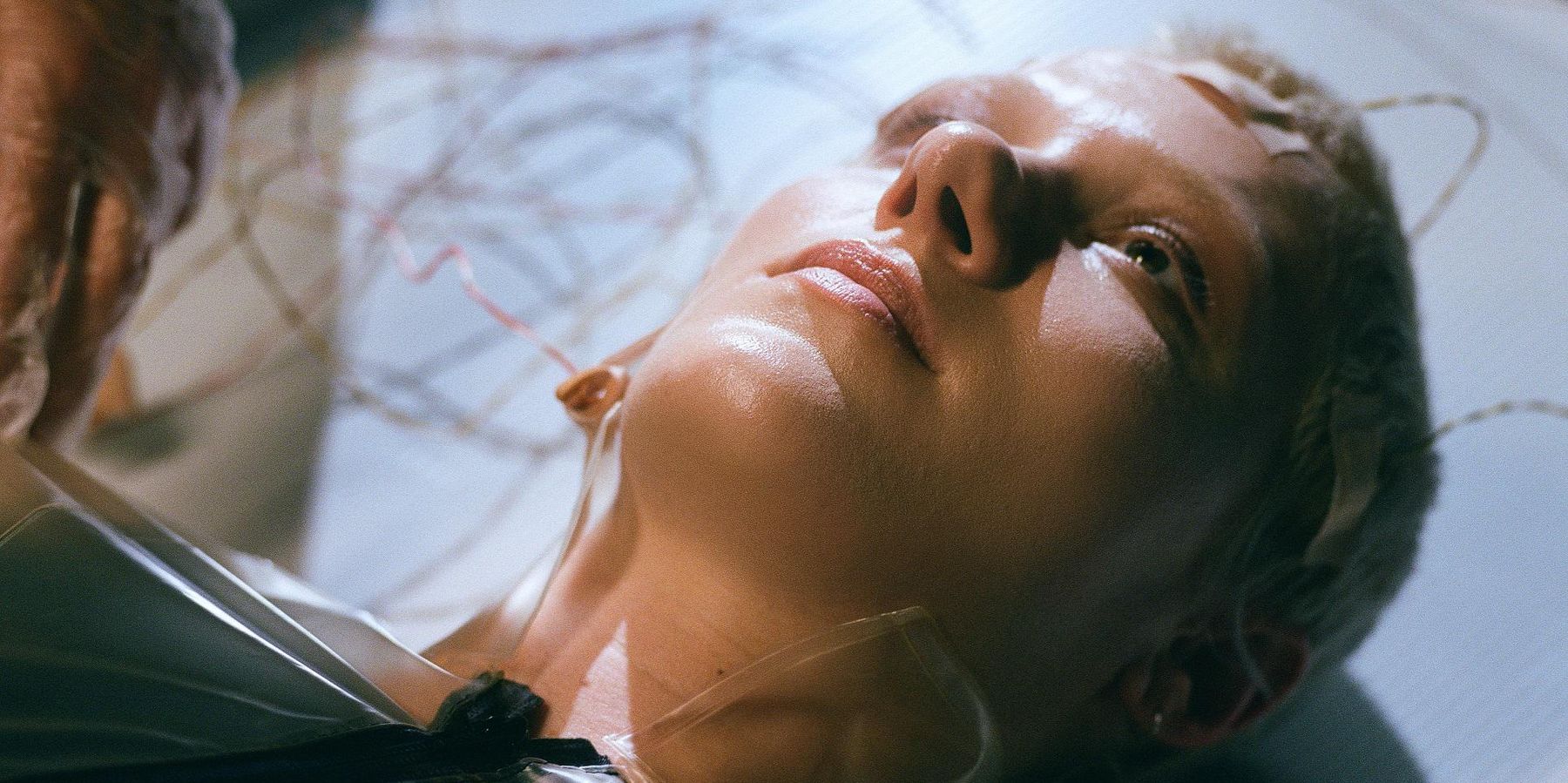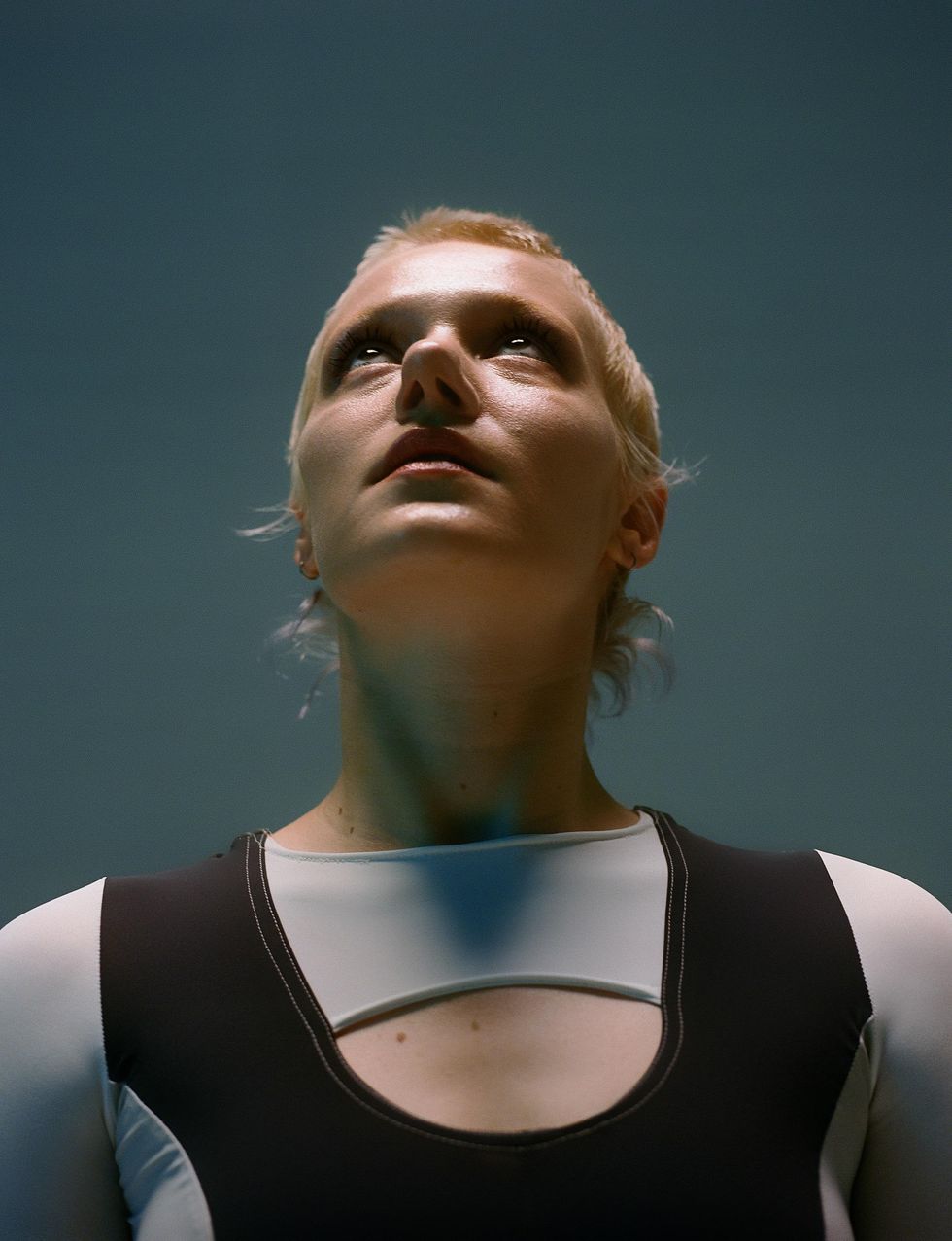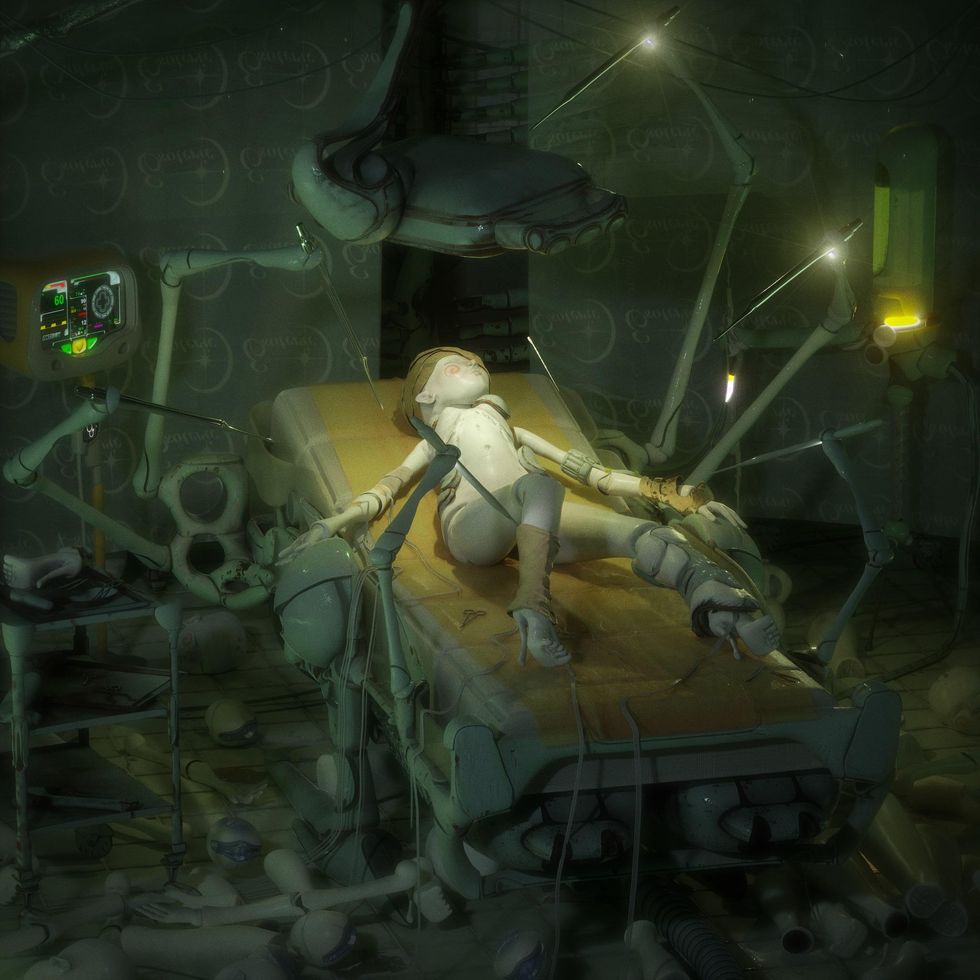
Harry Hains' ANTIBOY universe expands with the release of "Insanity," a dramatic music video that brings to light the duality of mental health struggles. Recorded a few years ago, prior to Hains' passing in 2020, the record holds special significance in a post-pandemic world, where our private and public identities have become more separated than ever before.
As a gender-fluid artist and actor, Hains understood the complexities — and vast possibilities — of our psyche well. So alongside producer Fernando Garibay, famous for his Lady Gaga collaborations like "Born This Way," ANTIBOY's "Insanity" becomes a powerful dance-pop statement of empathy.
The visual brings together director Agustín Farías and choreographer Alice Heyward to build off ANTIBOY's ideas. "After listening to the song, the idea came to my mind of a person who wants to connect to a parallel world in order to stop being who they are," Farías tells PAPER. "Or to change how they feel."

British dancer Leah Marojević is shown in an operating room, before we slip inside her mind, which is represented as an isolated studio space where she moves through frenetic choreography. For Farías, this laboratory "represents the outside, the real world in which we sometimes feel frozen, and the 'empty' space is a parallel reality in their mind where our character is in constant movement, dancing frantically, but we don't understand why."
Marojević says she responded to Hains' relationship with "post-humanism or trans-humanism," and the ways he began to unlock new categories of existence here on Earth. "Across my career I have worked intimately with ideas of fictionalizing my body into new figures and forms, as a way of liberating from various limits or oppressions which are experienced in reality," she explains.
Having been high school friends with Hains, Heyward tapped into their relationship to imagine "frenzied, impulsive" dance moves for Marojević — "a dance that happens both from deep inside the body, moving it in space, as well as dance happening to the body, through external causes," she says.
The two scenes in "Insanity" aim to bridge the gap between "mind" and "body," according to Heyward, who wanted to raise questions through her choreography: "What happens when one 'empties' their mind? What is left? What happens to the body? What is our desire for nothingness? What do we feel after our pain is taken away?"
Haines' legacy is kept alive by his mother, Jane Badler, who's become a fierce ally for the LGBTQ community and an advocate for mental health. "The thing about Harry was that in real life he could never express what he could in his lyrics and songs," Badler says. "Harry wrote the lyrics for 'Insanity' and it shows the brilliance of his poetry. Harry’s voice is very angelic and pure and honest on this song."
She continues, "It is about the mental health of Harry and of all those that suffer with mental health issues. The inability to reach out and ask for help, especially when in the grip of addiction, is why so many young people end their lives. The video expresses all of this through movement."
Alongside today's premiere, the Hains family also teases the future of ANTIBOY releases: a series of NFTS, created alongside "one talented artist," that will benefit a "special LGBTQ organization."

Photos courtesy of ANTIBOY
From Your Site Articles
Related Articles Around the Web